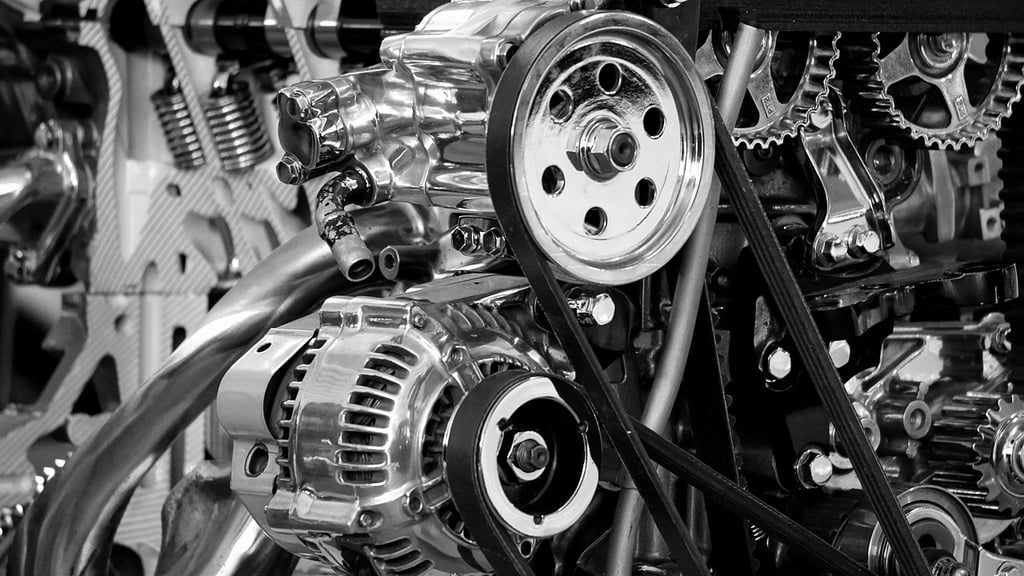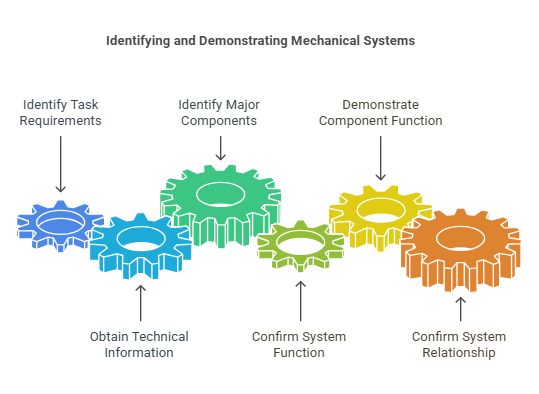Understanding and Identifying Automotive Mechanical Systems and Components
Posted by SkillMaker in Mar, 2025
What is a concise description of identifying automotive mechanical systems and components?

Identifying automotive mechanical systems and components involves recognising and understanding the various systems and elements that constitute a motor vehicle. This encompasses the engine, transmission, braking systems, electrical systems, and more, providing a comprehensive understanding of their function and interrelationships.
Listen to this article as a podcast
Why do people in the Automotive industry need to identify automotive mechanical systems and components?
People in the automotive industry require knowledge of mechanical systems and components to effectively diagnose, repair, and maintain vehicles. Understanding these components is essential for ensuring vehicle safety, performance, and compliance with regulations. It also assists in troubleshooting problems efficiently and maintaining high standards in automotive service and repair.
“In-depth knowledge of automotive mechanical systems is crucial for ensuring effective maintenance, leading to safer, more reliable vehicles.”
What are the key components or elements of automotive mechanical systems?
Key components of automotive mechanical systems include:
- Engine: The heart of the vehicle that converts fuel into mechanical energy.
- Transmission: Manages the power from the engine to the wheels.
- Braking System: Ensures the vehicle can be stopped safely.
- Electrical System: Powers all electrical components and controls within the vehicle.
- Suspension System: Provides stability and comfort by supporting the vehicle’s weight.
What key terms, with descriptions, relate to identifying automotive mechanical systems and components?

Registered Trademark®
- Crankshaft: Converts the linear motion of pistons into rotational motion.
- Differential: Allows for different wheel speeds during turns.
- Alternator: Charges the battery and powers the electrical system when the engine is running.
- Camshaft: Controls the opening and closing of valves in the engine.
- ABS (Anti-lock Braking System): Prevents the wheels from locking during braking.
Who is typically engaged with operating or implementing automotive mechanical systems and components?
Automotive technicians, mechanics, automotive engineers, service advisors, and quality control inspectors are typically involved in operating, diagnosing, and implementing tasks related to mechanical systems and components. These professionals ensure that vehicles are in optimum working condition and meet safety standards.
How does identifying automotive mechanical systems and components align or integrate with other components of the Automotive industry in Australia?

Identifying mechanical systems and components is integral to the automotive industry as it underpins the processes of repair, maintenance, and innovation. It aligns with manufacturing, design engineering, and aftermarket service sectors, ensuring cohesive operations and advancements in vehicle technology within the industry.
Where can the student go to find out more information about automotive mechanical systems and components?
What job roles would be knowledgeable about automotive mechanical systems and components?
Roles include:
- Automotive Technicians
- Automotive Service Advisors
- Vehicle Inspectors
- Automotive Engineers
- Diagnostics Specialists
What is identifying automotive mechanical systems and components like in relation to sports, family, or schools?

In sports, identifying automotive mechanical systems is like understanding each player’s role and how they work in unison to win a game. In a family context, it’s akin to making sure all aspects of daily life operate smoothly together. For schools, it’s comparable to how various subjects interconnect to provide a comprehensive education.
(The first edition of this post was generated by AI to provide affordable education and insights to a learner-hungry world. The author will edit, endorse, and update it with additional rich learning content.)
(Skillmaker – 2025)

 Post Tagged with
Post Tagged with